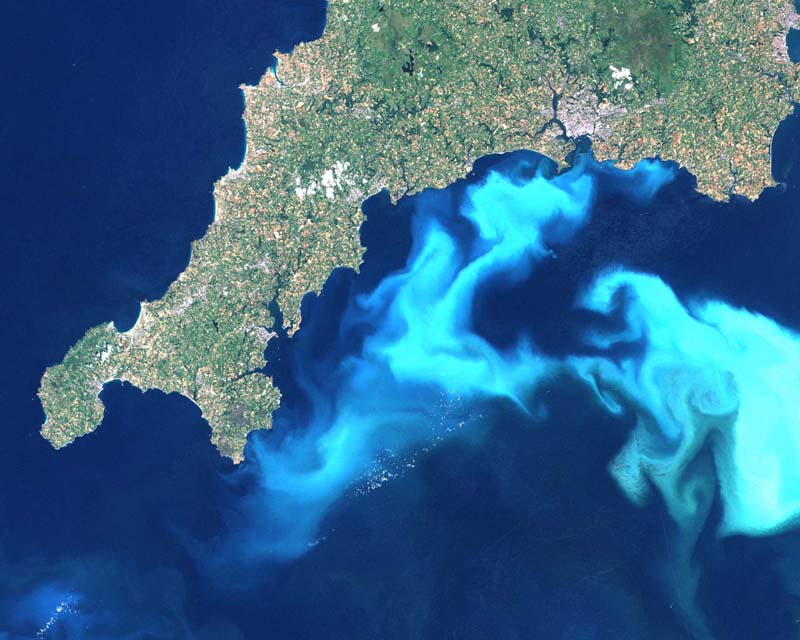Air in the balance

Oxygen—the very word conjures up images of pine forests, snowy mountain tops, and deep, fresh breaths of life-giving air. If there were too little oxygen in the air, almost everything would suffocate. You might think there is no need for any concern about oxygen levels, because trees and other plants are continually using the energy of sunlight to pump out huge quantities of this life-sustaining gas. This compensates for the fact that animals and people use up oxygen in order to 'burn' foodstuffs for energy.
This is true, but there are other mechanisms which remove oxygen from the air. For example, the chemical weathering (oxidation) of rocks around the world removes large amounts. Also, if the total quantity of oxygen put out by the world's plants were to increase such that the level in the air rose sufficiently, there would be disaster of another kind. Because oxygen is that part of the air which combines with things to make them burn, the world would be ravaged by firestorms.
Obviously, God designed the earth to be generally habitable for life until the time of the creation of a New Heavens and Earth. This would indicate that He would ensure mechanisms were in place to maintain the stability of the oxygen level, in spite of fluctuations in the amount released into or drawn from the atmosphere. In the real world, the level of oxygen is indeed maintained in an excellent balance, becoming neither too low nor too high.
Recent work by two American researchers (Philippe Van Cappellen and Ellery Ingall of Georgia Institute of Technology in Atlanta and the University of Texas at Austin, respectively) suggests some fascinating ways in which this is achieved.1
Floating oxygen farms
Much of the world's oxygen is produced using sunlight by algae floating near the surface of the sea. Even though each of these single-celled organisms is tiny, there are unimaginably huge numbers of them in every square kilometre. Also, the total area of the sea surface is vast, dwarfing that of all the rain forests of the world by comparison.
What happens if there is an episode of more intense weathering (oxidation) of rocks (such as would have happened in association with the Flood and the post-Flood episodes of mountain-building), thus drawing more oxygen from the air? The same weathering causes a release of extra amounts of phosphorus, which is a vital nutrient for marine algae and for which there is no other source. In response, the algae ‘bloom’ (i.e. multiply rapidly) and thus generate extra oxygen.2
What then if this threatens to be too much? As the air becomes more oxygen-rich, so too does the surface water. As this circulates to the bottom of the sea, it stimulates the action of oxygen-consuming bacteria living in the sediments of the sea floor. These act to bind phosphorus from the seawater, trapping it in the sediments. This then starves the surface algae of phosphorus, so reducing oxygen production.
Designed control
When oxygen levels get too low again, this bacterial activity is ‘throttled back’, which allows phosphorus to ‘leak’ back out of the sediments into the seawater, thus revving up oxygen production once more.
This balance between phosphorus burial and leakage is all dependent on the action of the smallest and humblest of creatures living in the darkness of the ocean floor. Yet it looks as if it is the vital ingredient in allowing life to continue until He comes. Something to think about when you draw in your next deep breath of fresh air.
References and notes
- How the seabed saves the world, New Scientist 2015:15, February 1996. Return to text.
- This is of some interest to creation scientists for another reason. Chalk layers (e.g. the White Cliffs of Dover) are the remains of tiny sea creatures, including algae. At the time of the Flood, the unprecedented erosion would have released huge quantities of phosphorus into the water. This would have contributed to massive algal blooming, thus helping to explain these chalk layers in a flood geology context. (See also Snelling, A., Can Flood Geology Explain Thick Chalk Layers?, J. Creation 8(1):11-15, 1994.) Return to text.





Readers’ comments
Comments are automatically closed 14 days after publication.